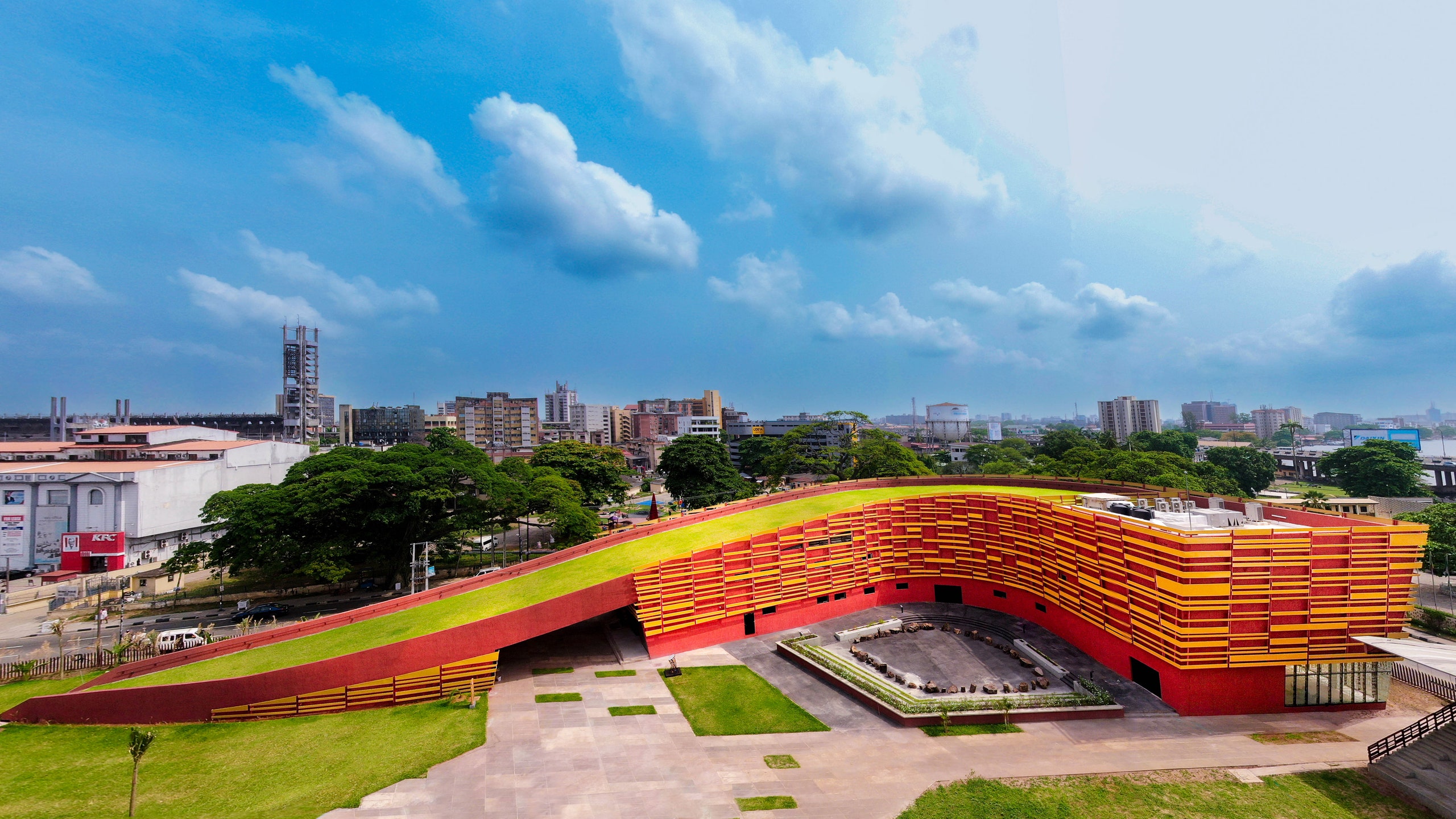On Lagos Island, in the heart of the Nigerian metropolis, the city’s first public pool has sat empty since the 1970s. Some Nigerians remember its later years as an infamous spot to canoodle, but its heyday began in 1928, in the era of Art Deco. After being denied financial support from the then colony’s British government, philanthropic doctor John Randle put forth his own funds to build it. At the time, the neighborhood was a hotbed of segregation politics. The British had opened a nearby members-only club in 1926, prompting Yoruba locals to start their own two years later. A few blocks away, Broad Street Prison—now a public park by local architect Theo Lawson—jailed activists for political protest.
When Randle, a lifelong champion of social equity, debuted the pool, it became a beloved oasis where many kids first learned to swim. (It was also a symbol of Nigerian perseverance and success: Randle’s father, Thomas, was born in the country’s Oyo State, enslaved in West Africa, and later freed in Sierra Leone.) This summer, it will receive new life as the John Randle Centre for Yoruba Culture & History, a 194,000-square-foot community and cultural complex. Designed by Lagos-based architecture firm SI.SA, it integrates the original pool and the adjacent 1950s J.K. Randle Memorial Hall with new recreation facilities, dining spaces, and a green-roofed gallery that offers a picnic-ready slope.
“This is an urban regeneration project,” explains SI.SA principal Seun Oduwole, who became familiar with the site in 2016 when conducting a citywide study of lost public spaces. “But it’s also bringing the lesser-known history of the area to the fore.” The project’s ring-like plan takes notes from traditional Yoruba cities, the structures’ concrete is tinted to match the red earth, and the gallery’s fractal powder-coated screen is inspired by ceremonial Ashoké cloth, examples of which are displayed inside with historical objects and stories of mythology.
Located across from the National Museum in Lagos and near the Centre for Black and African Arts and Civilization, the John Randle Centre helps form a new cultural corridor—and a democratic space in an area with a fraught history of exclusion. Says Oduwole, “That’s what architecture should be about: improving the social fabric of a city.” johnrandlecentre.org
